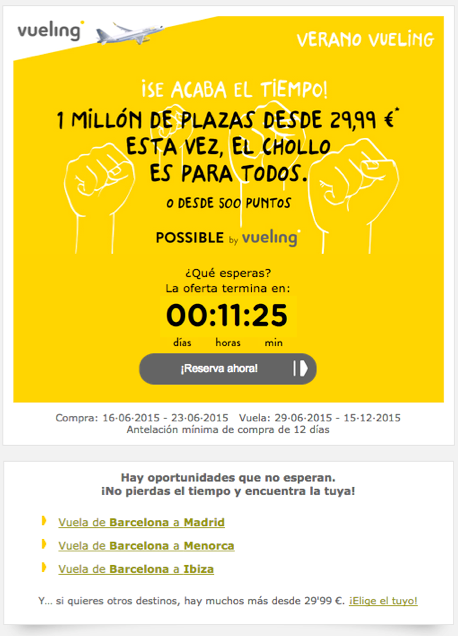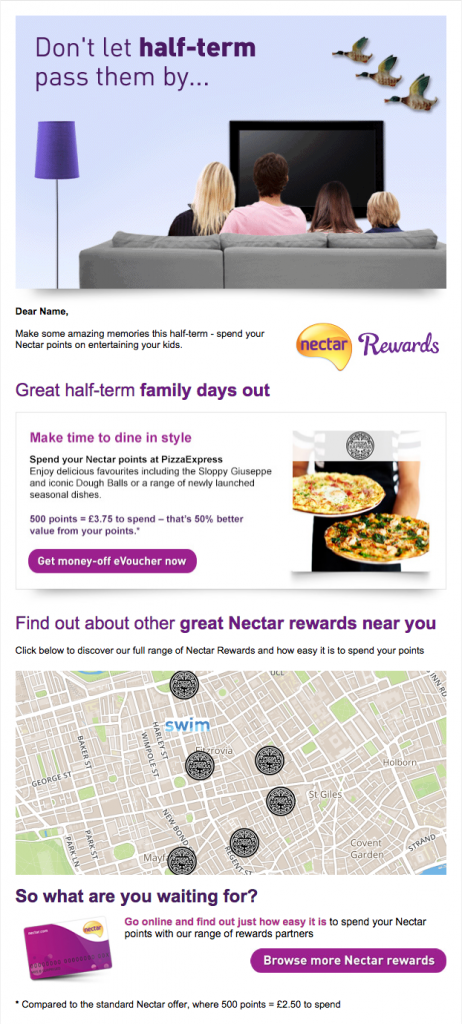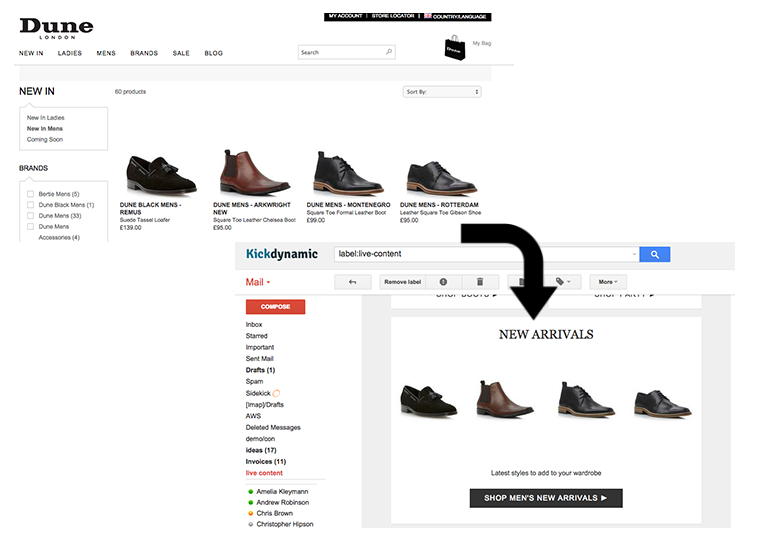In this post, we are going to introduce the concept of contextual email marketing and illustrate it with some examples. When we talk about contextual email marketing, we are referring to email marketing that, in real time, that adapts the content of the email to the context of the user and/or brand at a given moment. Without going to deep into the subject, we consider that context relates to:
– The moment of interaction. For example, I can open a flash sale email when there are 2 days remaining, or just a few hours remaining. In this case, it is a question of adapting the content to the two ‘time contexts’. In these cases, a countdown timer resource is very useful. Another example would be that a user may open an email during the week, when the influx to physical stores is lower, or at the weekend, when it increases. Depending on each context, it would make sense for the user to find content that would compel them to go shopping on a Saturday afternoon or to shop online.
– The place of interaction. Emails can be opened from the workplace, from home, from another city when on the move. Suppose we are a retailer with physical stores distributed throughout an entire country. If a user opens an email from a location where we have a physical store, we could show them that closest store on a map.
– The operating circumstances of the business. Our users can open an email that shows products on sale when they are in stock, and after a few days open it again when the stock level has changed. Depending on the conditions of this business context, we could show real-time stock levels of any product.
There can be multiple contexts, but contextual email marketing is about determining which elements are most significant when determining a context and using those that are operationally more agile, leading to better results.
To illustrate these ideas, we have included some examples of contextual email marketing that we have found interesting.

In this example from Vueling, we see the use of a countdown timer in which the user visualises the time remaining until the end of the offer. It is a visual tool to increase the sense of urgency, and to keep the user’s attention during the campaign.

This is an example of contextual email marketing based on geolocation. The user sees a map with the physical locations where they can redeem their points. Based on where the user opens the email from (the physical context), the closest locations are displayed.

In this example, the products that the sees when opening the email are updated as they appear in the online store. If the stock levels have changed after a few days, when the user reopens the email they will find the contents of the email have been updated to reflect the current stock at that moment in time.




